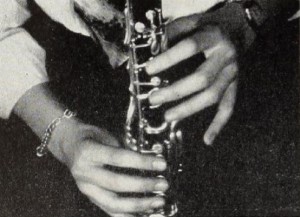
"Almost since the beginning of amateur movies, the dawn-to-dusk continuity has been a perennial favorite in personal movie making. In Hands Around the Clock, William Messner presents a suave and refreshing variation on this well-worn theme. For in his version, as the title suggests, only a pair of hands (apparently belonging to a talented teen-aged youth) portray the morning-to-midnight activities being pictured. Outstanding in Mr. Messner's production is the implicit evidence of exact and imaginative planning. Scene flows into scene, and sequence into sequence, with an effortless ease which finds every transition in exactly the right place. Mr. Messner's musical score is pleasantly suitable, excellently recorded and accurately synchronized. The producer of Maxine's Big Moment, a 1948 Ten Best, has taken a big step forward in creative filming." Movie Makers, Dec. 1950, 464.

"Films about national parks and monuments fall into the traps of banality with greater ease than almost any other variety of footage. It was. therefore, with great delight that the judges reviewed Timothy and Delores Lawler's Isle of the Dead. For, using the famed Boecklin painting and the equally known Rachmaninoff music as theme and atmosphere, the Lawlers have produced a cinematic tone poem from the materials offered by Yellowstone and the Badlands. Their efforts completely dominate both music and painting, which become effective substrata of the esthetic whole. The film's great virtue and its slight defects spring from the same source — the single mood that the Lawlers have worked for and have achieved." Movie Makers, Dec. 1950, 464-465.
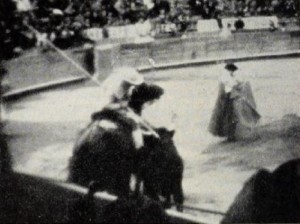
"Although Mexico has become a recurring theme among American movie makers, its varicolored panoramas seem fresh and vital when viewed through the discerning eyes of so capable a film reporter as Esther S. Cooke. She has a fine talent for blending human interest with purely scenic passages, so that Nextdoor Neighbor presents an informative and entertaining pageant of the sights and scenes below the border. Not the least of this producer's potentials are her diligent research, able organization and skillful editing. The more familiar scenes of Mexican life are supplemented here by an admirably detailed coverage of the national sport, bullfighting. Looking at this spectacle as if through Latin eyes, Mrs. Cooke has been able to transmute onto film its stirring pageantry and ritualized passion. A happy choice of Mexican recordings provide a beautifully blended musical score, which reaches its apex in the, bullfight sequence with the haunting and classic La Virgen de la Macarena." Movie Makers, Dec. 1950, 465.
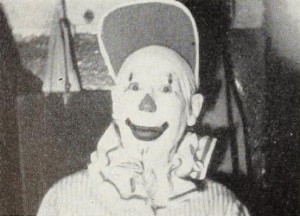
"A carefully detailed study of the biggest show on earth, Ringling Bros. and Barnum & Bailey Circus bears lively evidence to Oscar H. Horovitz's intense interest and attentive recording over a ten year period. The glamour and the tinsel, the thrills and the panoply, the sawdust and the sweat, all have been caught by his camera and painstakingly mounted. Backstage glimpses show something of what it takes to produce the massive extravaganza. The clowns in their dressing rooms reveal a little of the secret of their art. But in the eager faces of young spectators and the breathless attention of their elders can be read the circus's enduring mystery and perennial allure. The filmer's technical capabilities are manifestly demonstrated. Despite the obvious exposure handicaps, individual shots of admirable artistry turn up often enough to enliven any audience. With all these factors in its favor, however this massively impressive movie may leave some viewers wishing for a little less detail, a little more simplicity, and a still more stringent use of the editing scissors." Movie Makers, Dec. 1950, 465-466.
"This picture, in its original 1600 foot length, was selected by Movie Makers as one of the Ten Best in its 1950 competition. Oscar Horovitz has completely re-edited it, compressing it to 800 feet for what, we are sure, is a greatly improved picture. Certainly it is one of the best film documents of a circus ever seen by American Cinematographer's reviewers in many years, and we are sure that Cecil B. DeMille, who currently is producing a picture on circus life, would agree on the merits of its photography. Horovitz's camera—a Bell & Howell 70-DE camera—has caught the atmosphere of Circus Day with colorful scenes, both inside and outside the tents, beginning with the Sideshows and continuing inside the big top where he recorded all the big spectacles from a variety of angles. It is evident that making the picture required Horovitz to visit the circus on several different occasions, for it shows careful study and preplanning and a wise choice of positions for setting up his camera. The interiors, made under the big top with its attendant inferior lighting for photography, are commendable and offer a fine example of what can be done with Kodachrome film in the hands of a skilled cine photographer." American Cinematographer, May 1951, 190.
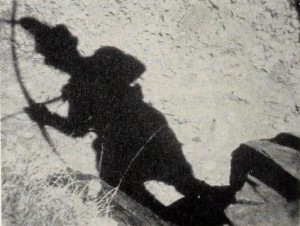
"In The Barrier, Glen H. Turner, Maxim Award winner in 1949 with One Summer Day, shows that the excellence of that production was no happy accident. Although the two films are as different as night and day, both are instinct with the same qualities of creative imagination and true understanding of the movie medium. This year's production, as we understand it, is bi-lingual in its message. On the screen Mr. Turner tells a robust adventure tale, in which a wandering western horseman, attacked by unfriendly Indians, has to fight his way out of their clutches and (even more menacing) over the heart-stopping challenge of a great stone barrier to his freedom. Around this screen action, and carried by the narrative, the producer also draws a frame of universal reference to all of life's challenging struggles. Pictorially, the acting of the horseman is powerful and convincing, while Turner's camera treatment of his adventures creates a spine-chilling sense of danger and drama. Especially effective is the producer's handling of the Indians, whose menacing presence is suggested only — by moving shadows, braceleted brown arms or moccasined stealthy feet." Movie Makers, Dec. 1950, 466.

"Aqua Viva, as its name suggests, is a study of water in motion. To state it thus baldly, however, cannot reveal the true cinematic beauty of Allan Hammer's swirling patterns of light and shadow, executed with consistent success under the most difficult exposure conditions. Yet more important than Mr. Hammer's technical competence is his imaginative perception of small moments of great loveliness. Such scenes, however, because of their very delicacy, tend always to lose their effectiveness in large doses. Aqua Viva as a production leans toward excess length." Movie Makers, Dec. 1950, 466.
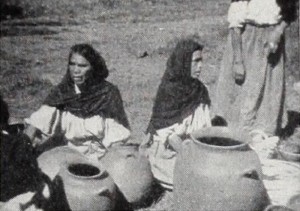
"Ella Paul did not try to cover the whole of Mexico, as do so many who visit that fascinating country. In fact she chose to limit her study to one small locale — the town of Patzcuaro and the activities on its lake. This primitive yet industrious community is recorded in pleasing compositions and with sympathetic appreciation of its sunny warmth and charm. The familiar butterfly nets, dugout canoes and the heroic statue of Morelos are all there in Beneath Mexican Skies; but Mrs. Paul's camera gives them a fresh treatment." Movie Makers, Dec. 1950, 466.

"A brief film designed as a trailer for home use rarely possesses the quality of general audience appeal. Grace Lindner may be justly proud of having achieved this elusive element in Bless This House. The film is a hymn of love, an ode in praise of home, the family, mutual understanding and other ingredients of the good life. That the theme is an emotional one is admitted. That it might have become painfully saccharine is granted. That it did not is due to the sensitive and restrained manner in which the filmer has presented her familiar scenes. Fred Waring's recording of the title song furnished the theme and is used as an integral part of the film." Movie Makers, Dec. 1950, 466.

"Fifty-odd owners of small Cessna planes take off from Milwaukee in the dead of winter to pay a flying visit to the principal points of interest in Guatemala. Dr. Herman A. Heise has made a competent and consistently interesting record film of the journey, while his wife furnishes a bright, informal commentary. The capable filming is happily complemented by well-paced editing and a suitable scoring of native Guatemalan music. On occasion, however, a too matter-of-fact pictorial approach and a few over-precious details in the narrative detract slightly from the overall excellence of Caravan to Guatemala as a record film." Movie Makers, Dec. 1950, 466.
"Ah! Wilderness: The stark beauty of remote mountain and plain areas, as yet untouched by the unrelenting surge of modern civilization, has been caught by Charles Benjamin's camera and Kodachrome film. Adapted from the book Stone Dust, by Frank Ernest Hill, Benjamin's film opens with scenes of mountain peaks and passes in winter- peaks mantled in snow, and trickling brooks that somehow have evaded the wintry grip of Jack Frost. The picture progresses in a like manner through Spring, Summer and Autumn, rendering a pictorial account of the ever-changing seasons in one of the few remaining wilderness areas of America. The picture discloses skillful camera handling as well as a talent for building interesting continuity through artful editing and titling." American Cinematographer, May 1951, 189
Total Pages: 299